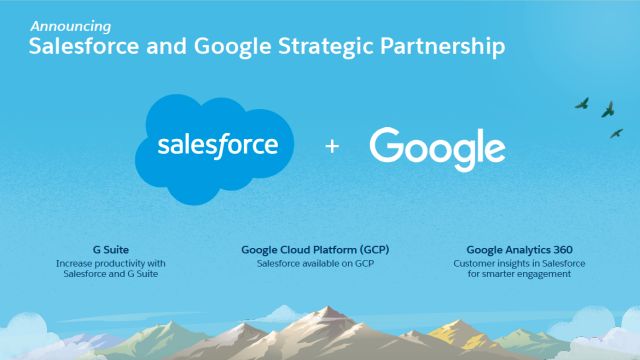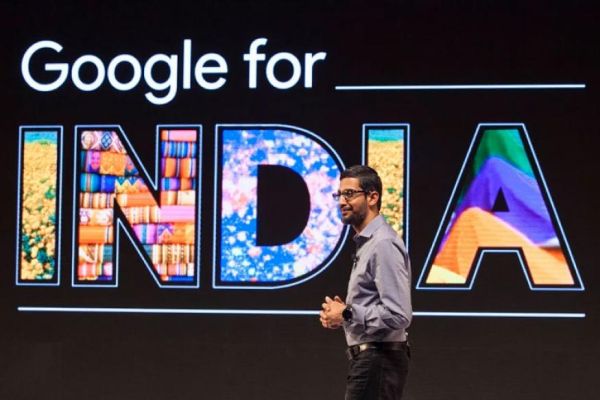
by Editor | May 25, 2021 | Business, Large Enterprise, Markets, Networking, Technology

Sundar Pichai
Shanghai : Hinting at a possible resumption of a harmonius relationship with China, Google’s India-born Chief Executive Sundar Pichai on Sunday said that a lot of the tech giant’s work actually helps Chinese companies.
Attending the fourth edition of the Chinese state-run “World Internet Conference” in Wuzhen, near Shanghai, Pichai said that many small and medium-sized businesses in China take advantage of Google to get their products to many other countries outside of China, the South China Morning Post reported.
The Google website and most of the company’s products — including YouTube — are banned in mainland China.
Google shut down its Chinese search engine seven years ago after a direct confrontation over Beijing’s censorship policies.
Apple Chief Executive Tim Cook and Cisco Systems CEO Chuck Robbins also attended the event.
The previous three conferences in 2014, 2015 and 2016 were not attended by such heavyweight US tech executives as Cook or Pichai.
Cook told the event that “the theme of this conference – developing a digital economy for openness and shared benefits – is a vision we at Apple share”.
He said that Apple “is proud to have worked alongside” many of its partners in China to help build a community that will join a common future in cyberspace.
Apple this year agreed to Chinese government requests to remove dozens of virtual private network (VPN) apps – services that allow Chinese users to access blocked websites – from its local App Store.
Skype, the calling app, was removed from its mainland App Store this autumn.
—IANS

by Editor | May 25, 2021 | Markets, News, Technology
 New Delhi : Sensing the need to skill the Indian talent for emerging technologies, Google, in association with technology learning platform Pluralsight and educational institution Udacity, on Thursday announced a new scholarship programme that will help train 1.3 lakh developers and students across the country.
New Delhi : Sensing the need to skill the Indian talent for emerging technologies, Google, in association with technology learning platform Pluralsight and educational institution Udacity, on Thursday announced a new scholarship programme that will help train 1.3 lakh developers and students across the country.
As part of the programme, Google will fund 100,000 scholarships on the Pluralsight technology learning platform and 30,000 scholarships on Udacity platform.
The scholarship would enable students gain access to advanced learning curriculum and further their employability in mobile and web development, machine learning, augmented and virtual reality, Artificial Intelligence (AI) and Cloud platforms.
“The new scholarship programme is in tandem with Google’s aim to train two million developers in India. The country is the second largest developer ecosystem in the world and is bound to overtake the US by 2021,” William Florance, Developer Products Group and Skilling Lead for India, Google, told reporters here.
In 2015, Google CEO Sundar Pichai had stated that the global Internet search engine giant will train 2 million new android developers in the next three years in India.
“In the last one year, we have engaged over half a million students and developers across India through a variety of programmes and initiatives. Since we announced our skilling initiative in India, 210,000 students have completed Google developed courses on Udacity, with 117,000 students completing the course this year,” Florance informed.
With Udacity, 1,000 developers will also be selected to receive full Nanodegree scholarships.
“Unlike China, India is lagging in innovation but is adopting technologies faster. There is an urgent need to upskill and reskill India’s technology workforce,” Florance said.
According to Arun Rajamani, Country Head and General Manager, Pluralsight, India’s tech workforce is going through a phase of transition.
“We are thrilled to partner with Google to help developers across India understand their skill level using Pluralsight IQ and advance their skill sets in four key roles: Android Developer, Mobile Web Specialist, Cloud Architect and Data Engineer,” Rajamani said.
“With this scholarship programme, students can master web and mobile development skills with the experts from Udacity and Google,” added Ishan Gupta, Managing Director-Udacity India.
—IANS

by Editor | May 25, 2021 | Branding, Business, Large Enterprise, Marketing Basics, Markets, Networking, Online Marketing, Social Media, Technology
 San Francisco : In a strategic partnership that is set to disrupt the global Cloud market, US-based Cloud computing company Salesforce has joined Google to deliver smarter, more collaborative experiences for customers.
San Francisco : In a strategic partnership that is set to disrupt the global Cloud market, US-based Cloud computing company Salesforce has joined Google to deliver smarter, more collaborative experiences for customers.
With the industry-first integration of Salesforce with Google Analytics 360, companies will be able to seamlessly connect sales, marketing and advertising data across Salesforce Sales Cloud, Salesforce Marketing Cloud and Google Analytics 360.
As part of the agreement, Google will continue to use Salesforce as its preferred customer relationship management (CRM) provider to engage with its cloud customers in new and meaningful ways.
Salesforce, a global leader in CRM solutions, will continue to use Google’s G Suite as its preferred email and productivity partner.
“Salesforce has named Google Cloud as a preferred public cloud provider to support the company’s rapidly growing global customer base and plans to use Google Cloud Platform for its core services as part of the company’s international infrastructure expansion,” Salesforce said in a statement late on Monday.
Now, a marketer can create customised audiences in Analytics 360 and easily push them to Marketing Cloud for activation in direct marketing channels such as email and mobile.
In addition, Analytics 360 data will be available directly within Marketing Cloud, delivering marketers one holistic dashboard of consumer engagement data.
“By integrating Sales Cloud data into Analytics 360, marketers will gain new visibility into the sales cycle, enabling them to create richer audience segments and deliver smarter ad optimisation,” the company said.
Customers will be able to surface powerful customer intelligence seamlessly between G Suite and Salesforce Lightning and Quip features.
Salesforce will continue to invest in its own data centres.
Additionally, Salesforce expects to utilise Google in select international markets to help bring new infrastructure online more quickly and efficiently.
—IANS

by Editor | May 25, 2021 | Markets, Technology

Google CEO Sundar Pichai
San Francisco : After an intense debate on the social media over the placement of cheese in Android’s and Apple’s burger emojis — which was joined by India-born Google CEO Sundar Pichai — the tech giant has finally served “Android burgers’ to its employees.
At its Seattle office, the workers were served “Android burgers” during Friday’s lunch, ending the debate that Android burger emoji is the winner when it comes to placing the cheese.
“The key difference between this burger and any other is that the slice of cheese is placed beneath the patty and atop the lower bun. It looks exactly like Android’s burger emoji, which sparked heated controversy earlier this week over the correct ingredient order of America’s beloved staple,” The Verge reported on Saturday.
The whole thing started when Thomas Baekdal, a writer and media analyst, tweeted early this week on the placement of cheese in Android and Apple burger emojis.
“I think we need to have a discussion about how Google’s burger emoji is placing the cheese underneath the burger, while Apple puts it on top,” Baekdal tweeted.
Reacting to this, Pichai tweeted, promising to “drop everything” and address the issue if people on the platform agree on what the correct placement of ingredient should be.
With serving “Android burgers,” it appears the kitchen department at Google has heard Pichai loud and clear.
The hamburger emoji, also known as the cheeseburger, was approved as part of Unicode 6.0 in 2010 and added to Emoji 1.0 in 2015, according to Emojipedia — an emoji reference website.
—IANS

by Editor | May 25, 2021 | Branding, Corporate, Corporate Reports, Marketing Basics, Markets, Networking, Online Marketing, Sales, Social Media, Technology
 San Francisco : Essentially a hardware-focused firm, Apple is falling behind in the Artificial Intelligence (AI) race with Google and Amazon racing ahead while embracing the open-source and collaborative approach in the emerging field of AI, Fortune reported.
San Francisco : Essentially a hardware-focused firm, Apple is falling behind in the Artificial Intelligence (AI) race with Google and Amazon racing ahead while embracing the open-source and collaborative approach in the emerging field of AI, Fortune reported.
According to Mohanbir Sawhney, McCormick Foundation professor of technology at the Kellogg School of Management at Northwestern University, sheets of glass are simply no longer the most fertile ground for innovation.
“That means Apple urgently needs to shift its focus and investment to AI-driven technologies, as part of a broader effort to create the kind of ecosystem Amazon and Google are building quickly,” Sawhney wrote in Fortune.
According to him, Apple has reached its peak with “super premium” iPhone X and “does not represent the beginning of the next 10 years of the smartphone, as Apple claims”.
Apple launched the iPhone X globally on Friday.
Players pursue innovation along a vector of differentiation until the vector runs out of steam.
“When that happens, the focus of innovation shifts to a different vector and new market leaders emerge. We have seen this pattern several times in mobile phone innovation over the past three decades,” Sawhney said.
The vector of differentiation is now shifting from hardware to AI and AI-based software and agents.
“As AI-driven phones like Google’s Pixel 2 and virtual agents like Amazon Echo proliferateaToday’s smartphones will likely recede into the background,” he stressed.
Google Pixel phones offers great photo-enhancement features and deeper hardware-software integration driven by AI-based technology.
The second edition of Pixel features 5-inch display, 4GB RAM, 12MP rear and 8MP front camera, and 2,700mAH battery.
Google will bring Pixel 2 XL (6-inch display) into the Indian market from November 15 onwards.
The Amazon Echo enables natural conversations through the Alexa virtual agent.
“Apple has only to look at Motorola, Nokia, and Blackberry to understand how quickly a leader can fall from the peak in this market, and do its best to avert this outcome,” Sawhney added.
—IANS





